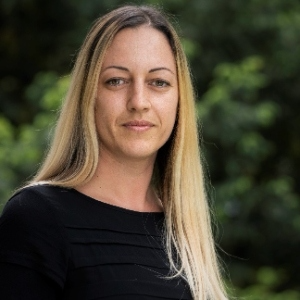Title : 3D GPR models of agricultural fields for analyzing changing soil conditions
Abstract:
Soil characteristics of agricultural fields are traditionally determined by pedological analyses, where soil samples are collected from each horizon within pedological profiles. These provide information on soil characteristic from specific points in the agricultural field. However, due to the heterogeneity of agricultural fields, where soil conditions can change both laterally and vertically, data gathered from these points cannot simply be interpolated across entire fields. Increasing the number of pedological profiles within the area of the field would not only be costly and time-consuming but also extremely invasive. Non-invasive techniques can help with investigating the changing conditions of agricultural fields and determining areas where additional pedological profiling is needed. One such method is the ground penetrating radar (GPR), a non-invasive geophysical method for investigating the near subsurface. By recording parallel GPR profiles across the agricultural fields, it is possible to merge 2D profiles into 3D models that can be further analysed by horizontal slices at different depths. This enables us to observe the changes of soil characteristics across entire fields and locate possible areas of anomalies, such as areas of higher water and nutrient retention and/or faster runoff, as well as paleochannels of nearby streams and rivers. These land features have a different soil composition and thus crucially impact crop growth as they require irrigation and fertilisation regimes different from their surroundings. Identifying such areas can help landowners adapt their precision agriculture practices for the changing field conditions and advance their sustainable farming practices. The results of a 3D model of an agricultural field created from parallel 2D GPR profiles will be shown. The analysis of horizontal slices of the 3D model uncovered a clearly visible paleochannel at the depth of approx. 0.5 m. This paleochannel of a nearby stream runs across the field at the exact area where crop growth is heavily reduced in comparison to the surrounding area. This research is co-funded by the Slovenian National Committee of the UNESCO, International Geoscience and Geoparks Programme, grant No. C3360-25-456005, and its project IGCP 730: Hydrogeological Significance of Mediterranean Geoparks. It is also co-funded by the Slovenian Research and Innovation Agency (ARIS) project No. J1-4412 and programmes P1-0020 and P1-0011.



